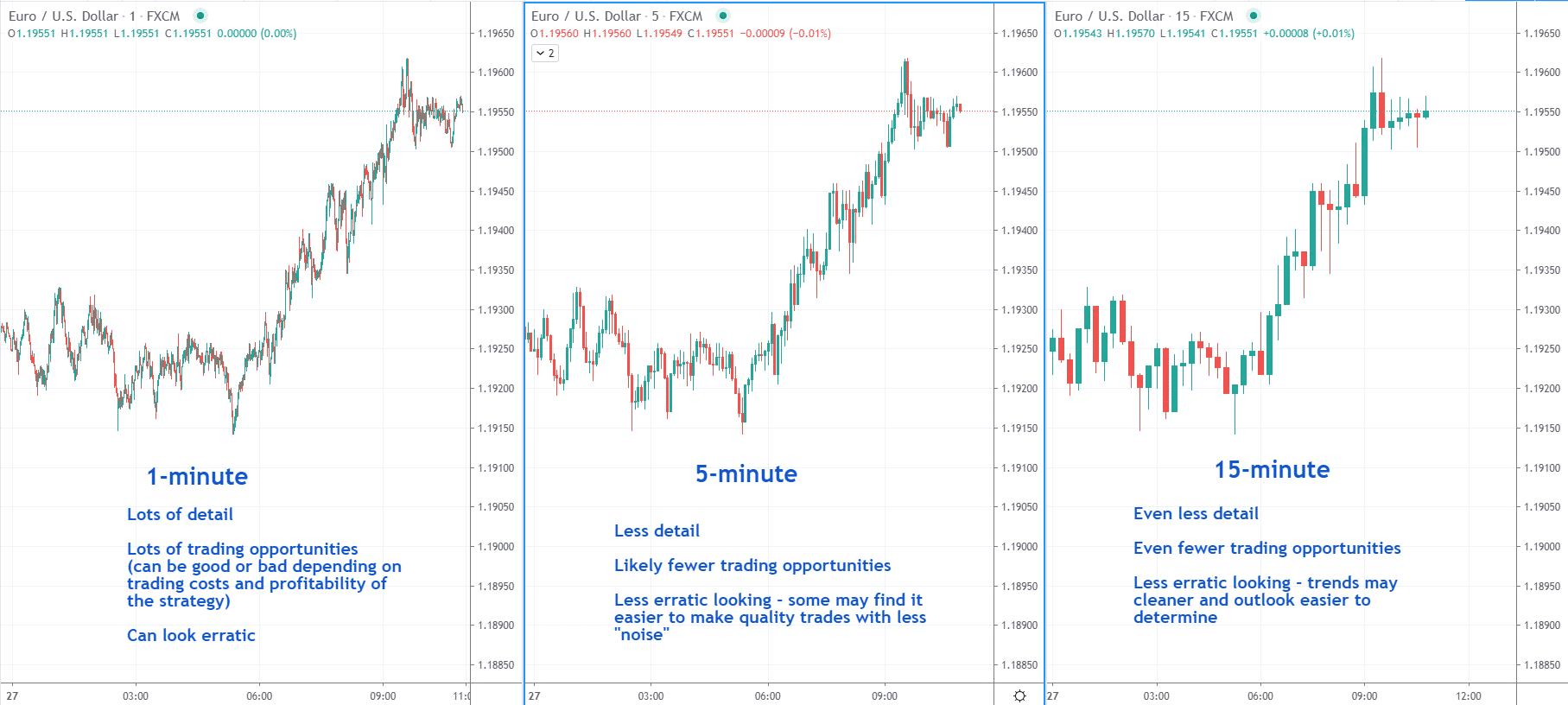In the fast-paced world of currency trading, finding the right time frame for your swing trades can be critical to success. Swing trading, a strategy that involves holding positions for several days or weeks, requires a keen understanding of how market prices fluctuate over different time intervals. In this comprehensive guide, we will delve into the world of swing trading forex time frames, provide you with valuable insights, and help you identify the best time frames for your trading style.

Image: movingaveragetrader.com
Before we dive into the specifics, let’s begin by understanding what swing trading entails. It is an intermediate to advanced trading strategy that aims to profit from price swings that occur over a period of days or weeks. Unlike scalping, which involves holding positions for a few minutes or hours, swing traders focus on capturing larger price movements and, as a result, will often trade fewer positions compared to scalpers or day traders. Also, swing traders do not require constant monitoring of charts throughout the day as they typically enter and exit positions based on technical analysis and defined risk management strategies.
Choosing the Right Time Frame
The choice of time frame in swing trading is a crucial decision that can significantly impact your trading outcomes. While there is no universally ‘right’ or ‘wrong’ time frame, the best one for you will depend on your trading style, risk tolerance, and the specific market conditions you’re trading.
Generally, swing traders who prefer to focus on short-term price movements might opt for shorter time frames such as the 1-hour or 4-hour charts. These time frames allow traders to identify and capture quick price swings and can be suitable for traders who are comfortable with a higher level of risk and volatility. On the other hand, swing traders who prefer a more long-term approach and are willing to hold positions for longer periods might choose to trade on daily, weekly, or even monthly charts.
Advantages and Disadvantages of Different Time Frames
Each time frame comes with its own set of advantages and disadvantages:
- **Short-term time frames (1-hour, 4-hour charts):** These time frames provide more frequent trading opportunities and can be more suited for traders with smaller accounts who need to trade with a higher frequency to generate profits. However, they also tend to be more volatile and can be prone to noise and false signals which could lead to higher drawdowns over time, so proper risk management and position sizing is crucial.
- **Medium-term time frames (daily, weekly charts):** These time frames offer a balance between short-term and long-term trading. They allow traders to capture larger price swings while still maintaining a manageable level of volatility and risk. They might be suitable for traders who have a good tolerance for potential drawdowns but understand that outsized or quick results are hard to achieve.
- **Long-term time frames (monthly charts):** These time frames are ideal for traders who are looking to take positions with a longer-term horizon. They can be more suited for traders who are willing to hold positions for weeks or months and can provide a less volatile trading environment. However, they also tend to present fewer trading opportunities than shorter-term time frames.
Factors to Consider
When selecting a swing trading forex time frame, consider the following factors:
- **Your trading style and risk tolerance:** Are you comfortable with shorter-term, more volatile trading or do you prefer a more long-term approach with less frequent trading opportunities?
- **The market conditions:** Are you trading in a volatile or range-bound market? The choice of time frame may depend on the market conditions you are trading.
- **Your trading strategy:** What are your entry and exit strategies? Do they align better with certain time frames?

Image: investgrail.com
Conclusion
The choice of swing trading forex time frames is a personal decision that should be based on your individual trading goals, risk tolerance, and strategy. It might require some experimentation to find the time frame that best suits you. Once you have chosen a time frame, it’s important to be disciplined and stick to it. Remember, it’s not about the frequency of trades, but about capturing profitable price swings and managing risk effectively.
Are you ready to make the most of swing trading forex with the right time frames? Start exploring the possibilities and unlock the potential of this powerful trading strategy. Happy trading!
Swing Trading Forex Time Frames
Frequently Asked Questions
Q: Which time frame is the most profitable for swing trading?
A: The profitability of a time frame depends on your trading style and the market conditions. There is no ‘best’ time frame, but shorter time frames offer more trading opportunities while longer time frames tend to be more stable with less frequent trades.
Q: How do I choose the right time frame for my trading strategy?
A: Consider your trading style, risk tolerance, and the market conditions. Experiment with different time frames to determine the one that aligns best with your strategy and goals.
Q: Can I change my time frame during a trade?
A: It’s not recommended to change your time frame during a trade. Once you’ve entered a trade based on a specific time frame, stick to it for consistency and avoid confusion.
Q: Which time frames are recommended for beginners?
A: Beginners may find it easier to start with medium-term time frames such as the daily or 4-hour charts. These time frames offer a balance between volatility and trading opportunities.
Q: Is it better to swing trade on a shorter or longer time frame?
A: The choice depends on your trading style and risk tolerance. Shorter time frames offer more frequent trades with higher volatility, while longer time frames provide fewer trades with less volatility.






